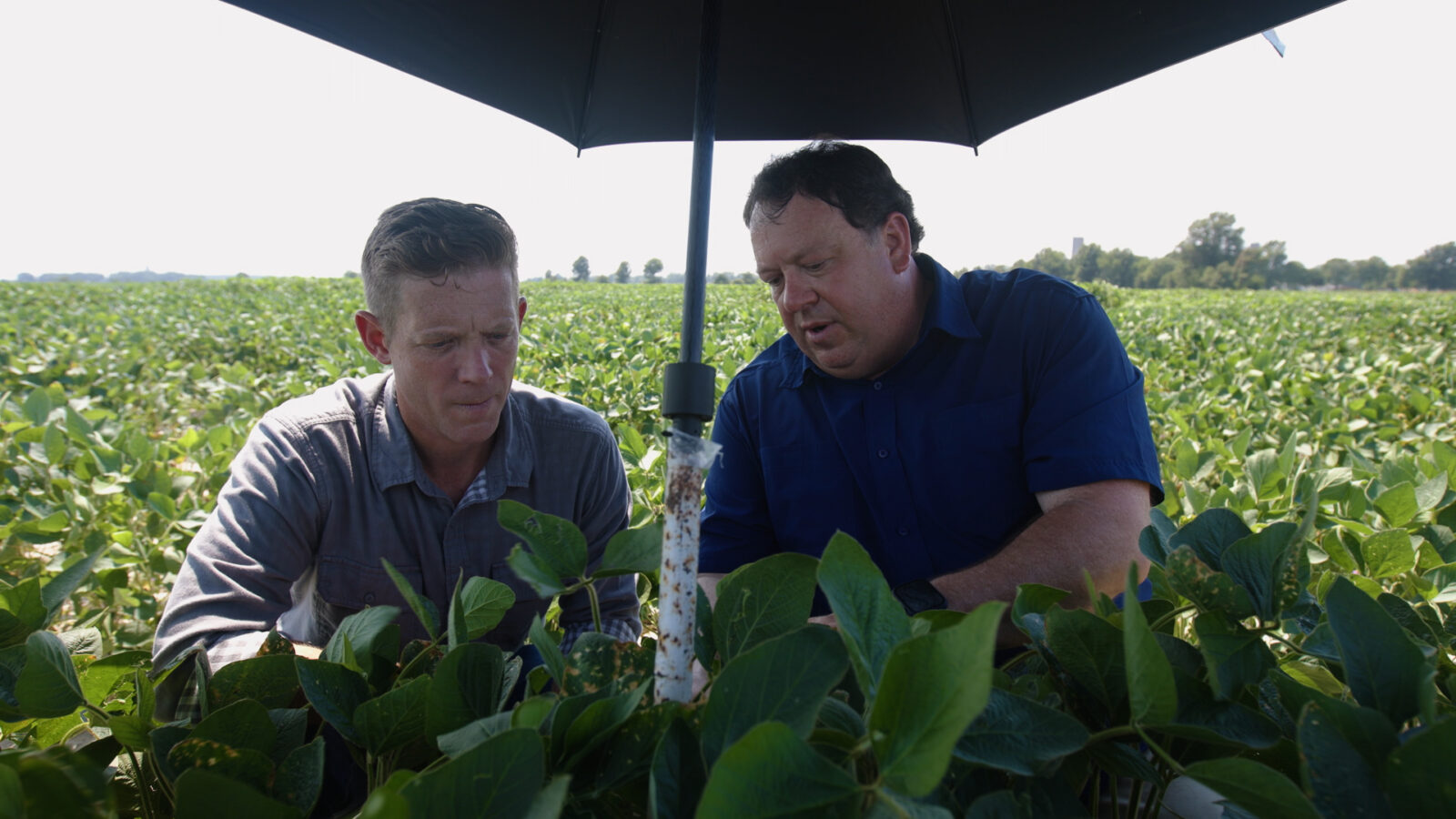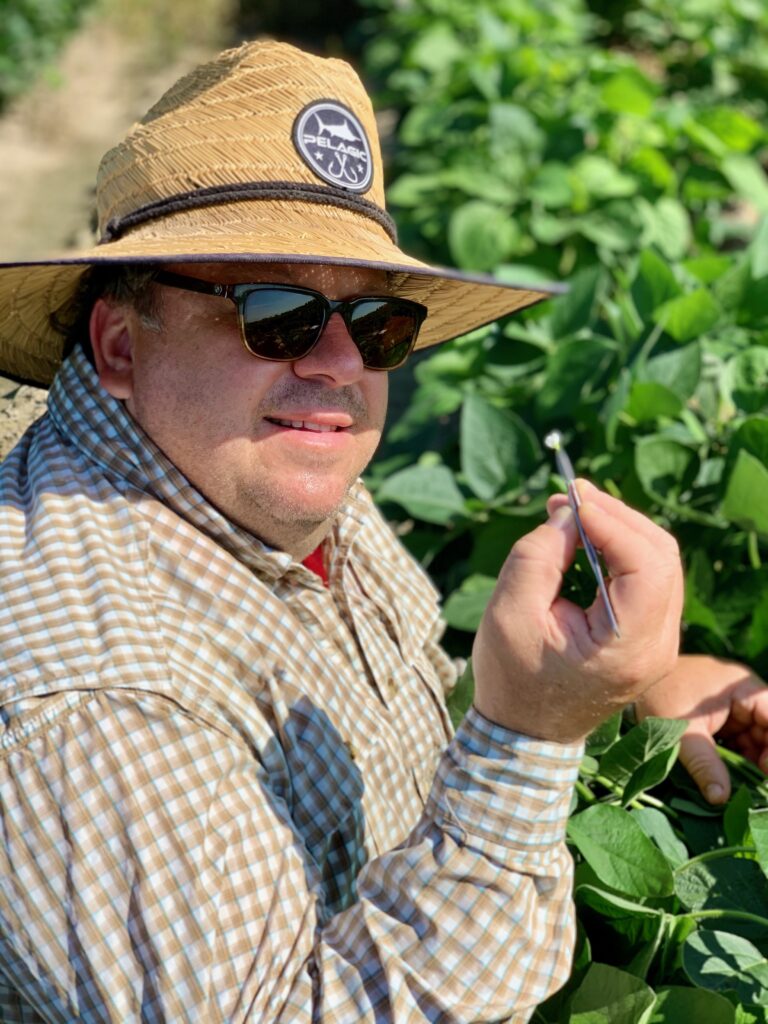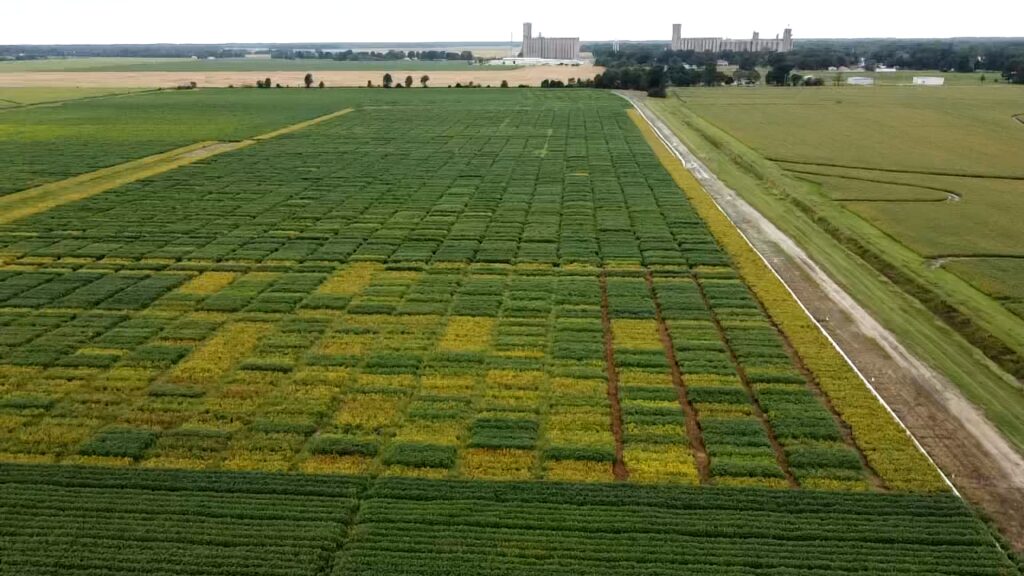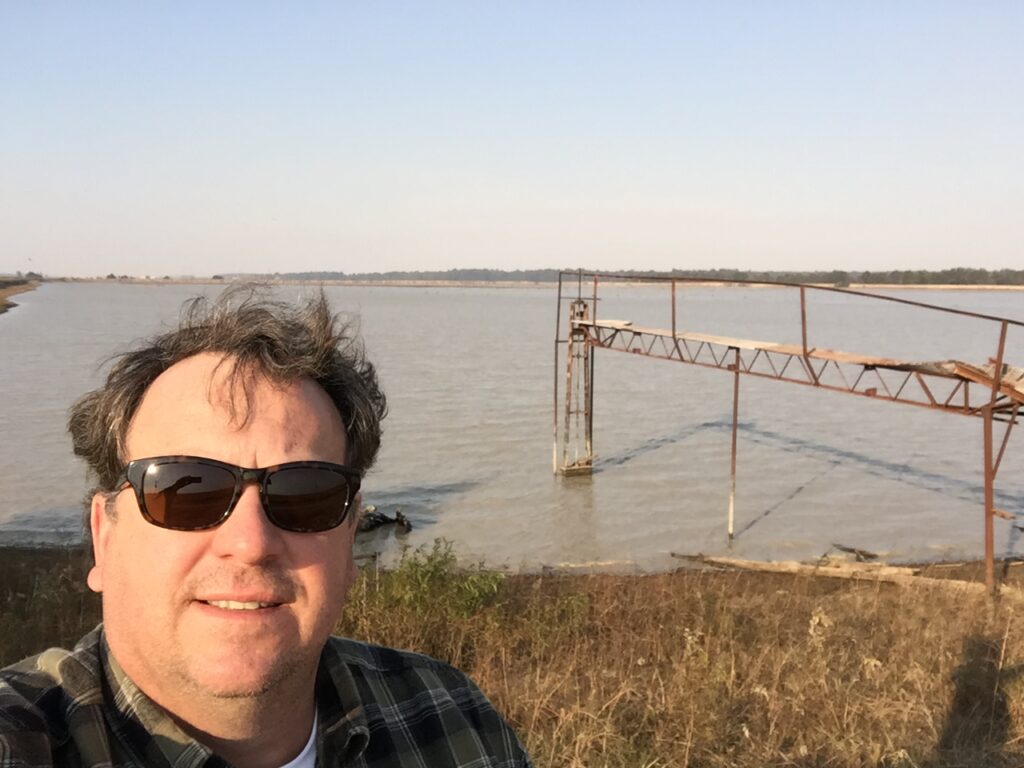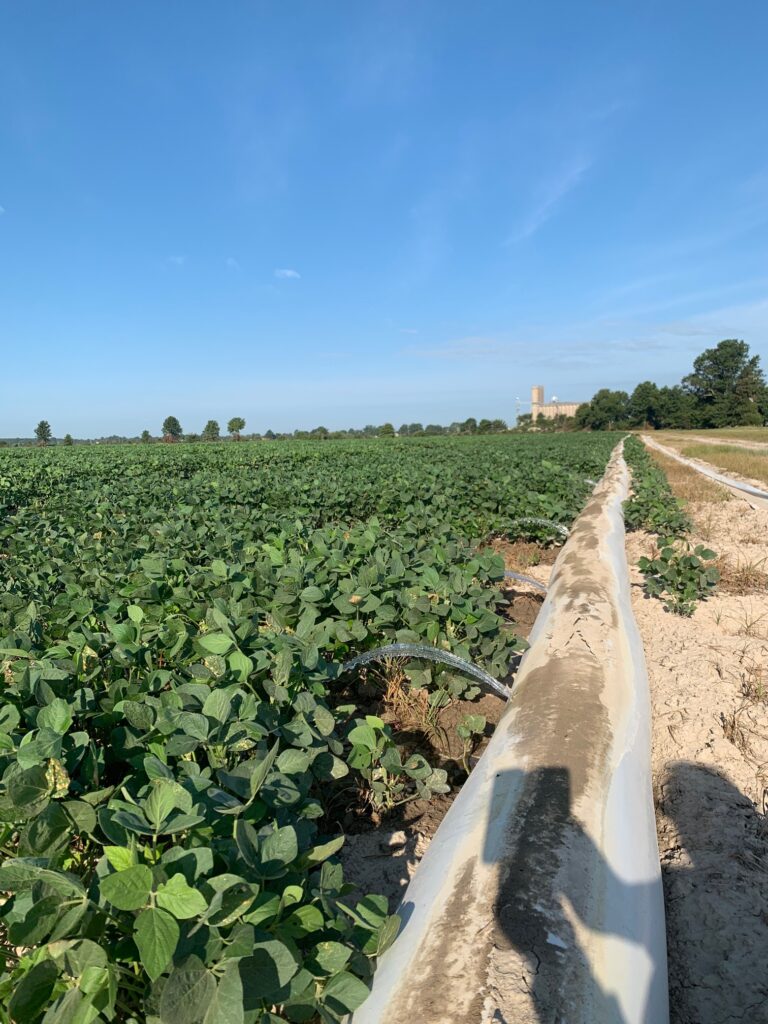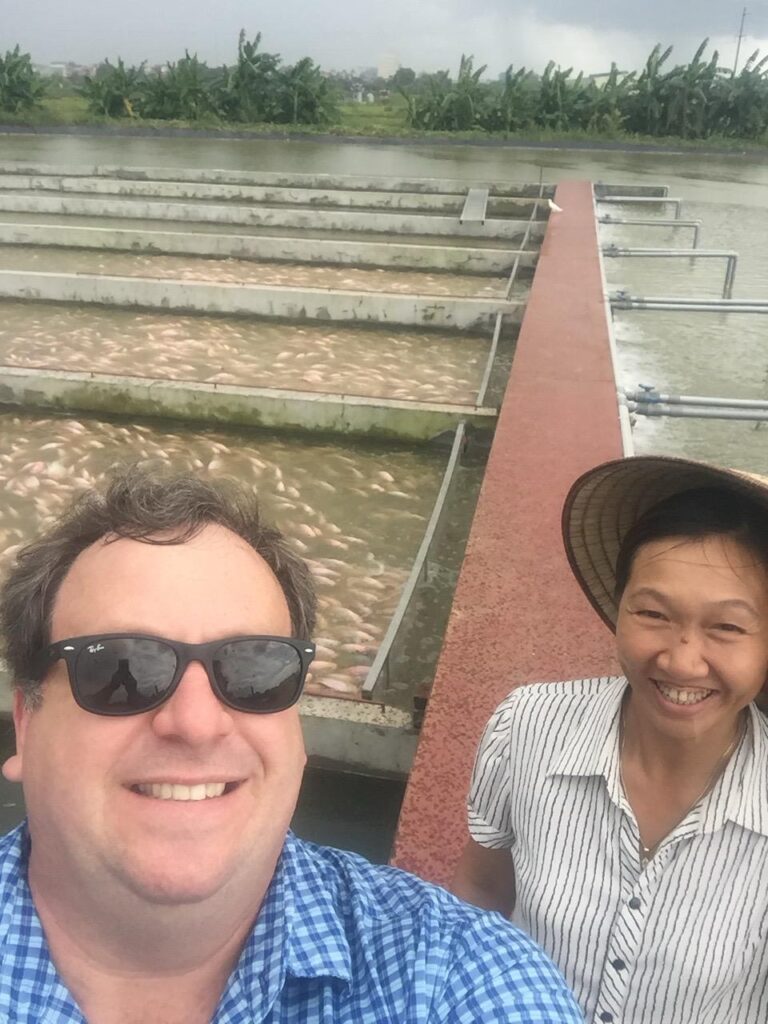The Ground Work series shares the perspectives of U.S. soybean farmers as they observe how the U.S. Soy industry lays the groundwork to grow innovative, reliable and sustainable solutions for people and communities around the world.
I enjoy shows about travel and history. So I welcomed the opportunity to be part of GroundBreaking: A Story of Innovation, a documentary that traveled around the U.S. to tell the story — including the history — of soybeans.
I know soybeans well.
My wife and I are part of a multi-generational family farm and family-owned and run seed company in rural northeast Arkansas, about 60 miles, or 95 kilometers, west of Memphis, Tennessee, and the Mississippi River. We raise soybeans, rice and other crops, and our company develops new soybean varieties, as well as rice, wheat and cover crop seed.
At Eagle Seed Company, we create new soybeans using cross-pollination techniques that U.S. soybean breeders have used for over a century. But we use those proven techniques to take advantage of the genetic diversity of soybeans to improve them for specific uses, including soy foods like tofu or soy milk.
I got to explain the process of developing new soybeans by cross pollinating to Jeff Houghton, the host of GroundBreaking. Jeff and the video crew spent a summer day on our farm to shoot a documentary segment about soybean genetics.
You can watch as Jeff and I sat down in one of our research plots to do the first step in what could become a new type of soybean, using the pollen from the flower of one type of soybean to pollinate specific flowers on another soybean variety. It is very similar to breeding most types of plants.
In addition to what is shown in the documentary, we talked about how we go through data during winter to come up with ideas of soybeans we want to try to cross. Desire for higher yields drives innovation in soybean breeding, but we also account for factors like weed control, resistance to diseases and pests, tolerance for environmental stress, and shifts in management.
For example, weed control is the biggest challenge for farmers in our area, but in the 25 years I’ve been breeding soybeans, they have also started planting and harvesting soybeans earlier because research proved they can improve both yield and soybean quality. That means we are breeding soybeans that mature earlier and adding traits that allow farmers to use specific herbicides. U.S. Soy also invests in researching genetics that better tolerate drought and flooding as shifting climate patterns bring extreme conditions to our fields more often.
Once we consider all those drivers and create our plan for crossing varieties, we have to coordinate planting timing of the parent soybeans so they flower at the same time. It’s a delicate process, with lots of notes and data.
Over the course of three years, we plant the seed resulting from every successful cross-pollination to see what characteristics it carries from its parents. Then, after years three and four, we usually choose the best 50% of the crosses to keep studying. By years five and six, we keep the top 10 to 20% of the best soybeans.
That’s why the labeling Jeff and I discuss in the film is so important. We quickly have lots of different soybeans, and we need to keep track of them.
After seven years, we start sharing our new soybeans with specific customers to see if they can improve their products. Take tofu, for example. We know tofu processors like large, uniform beans with specific color.
Those companies are constantly looking for improvements, and we want to meet their demands. At the same time, we need to make sure those soybeans will grow and yield well in our growing conditions. The goal is to create a new soybean that gets added to the approved list that a customer wants to buy.
As part of the GroundBreaking documentary, I give an inside look at how farmers and plant breeders help improve our industry through this time-tested process. To learn even more, check out what I shared with U.S. Soy customers a few years ago: Soybean Breeding in Arkansas.
Throughout that day, I shared more about our farm and our conservation efforts off-camera, like our irrigation system. Our soil doesn’t drain well, so we create furrows in our fields that allow water to flow off fields in the spring so we can plant. We store that water in a reservoir on our farm. In the summer, when it is often very hot and dry, we use the water in the reservoir and the furrows in the fields to irrigate our crops.
We understand the importance of managing water all around us — especially because we live on a retired catfish farm. I appreciate that the GroundBreaking documentary highlights how U.S. Soy has revolutionized water management in aquaculture. Jeff and the crew traveled to Auburn, Alabama to explain how the in-pond raceway system, developed through support from U.S. soybean farmers like me, benefits fish production.
As I’ve traveled, I’ve seen this system work around the world. I first saw the in-pond raceway system in Vietnam in 2017, where an aquaculture farmer reported that local customers liked her red tilapia better than others after she had a system installed. I’ve also seen it at work in Cambodia in 2022. And just this summer, I talked to an aquaculture farmer in Colombia who relies on the system as he supplies fresh tilapia fillets to U.S. customers through stores like Costco. The system, combined with using U.S. Soy products in fish feed, improves the sustainability and efficiency of fish production.
My family helps U.S. Soy bring solutions to customers through new soybean seeds and to our environment through the way we farm sustainably. Through efforts like the in-ponds raceway system, U.S. Soy brings similar sustainable solutions to customers around the world.
If, like me, you enjoy travel, history and the unexpected, don’t miss GroundBreaking: A Story of Innovation. You’ll be surprised at the role of soybeans in our history and the places soy goes.
